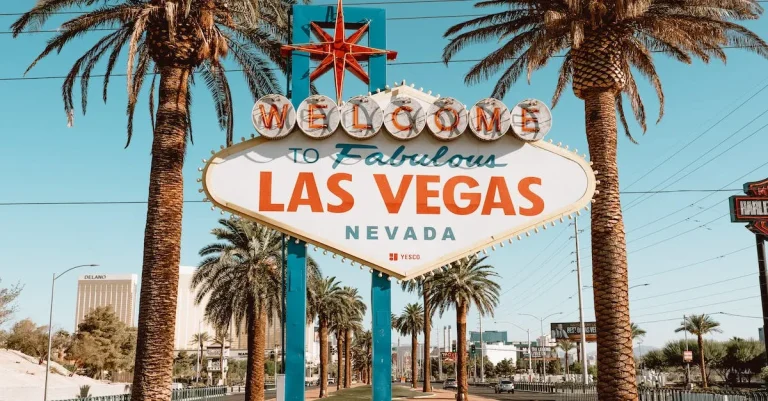Why Do New Yorkers Have An Accent?
The New York accent is one of the most recognizable in the United States. From “cawfee tawk” to “youz guys,” the way New Yorkers talk tells people immediately where they’re from. If you’re short on time, here’s a quick answer: New Yorkers developed a distinctive accent due to the city’s historic diversity of immigrants and regional dialects mixing together.
In this comprehensive guide, we’ll explore the linguistic and social history behind the New York accent. We’ll look at the different immigrant groups and American dialects that contributed to its sound. We’ll also discuss how the accent has evolved over time, as well as its portrayals in media and pop culture.
Origins: Immigrant and Dialect Influences
New York City is known for its diverse population, which is a result of centuries of immigration from all over the world. This rich tapestry of cultures and languages has greatly influenced the development of the New York accent.
The origins of the accent can be traced back to the various immigrant groups that settled in the city.
Irish and Italian Immigrant Dialects
During the 19th and early 20th centuries, large numbers of Irish and Italian immigrants arrived in New York City. These groups brought with them their own distinct dialects, which eventually blended with the local English spoken in the city.
The influence of the Irish and Italian accents can still be heard in certain neighborhoods and among older generations of New Yorkers. For instance, certain words and phrases, such as “youse” (used to address a group of people) or “fuhgeddaboudit” (meaning “forget about it”), have become iconic features of the New York accent.
Influences from Neighboring Regions
Another factor that contributed to the development of the New York accent is the influence of neighboring regions. New York City is located in close proximity to New Jersey and Long Island, both of which have their own distinct accents.
The close interaction between these areas has led to the blending of dialects, resulting in a unique accent that is commonly associated with New York City.
The New York accent also draws influence from the dialects spoken in the surrounding states, such as Connecticut and Massachusetts. The proximity and frequent interaction between these regions have resulted in the exchange of linguistic features, further shaping the New York accent.
African American Vernacular English
The influence of African American Vernacular English (AAVE) is another important aspect of the New York accent. African Americans have been an integral part of New York City’s history, and their distinct dialect has had a significant impact on the local speech patterns.
Words and phrases from AAVE, such as “yo” (used as a greeting) or “mad” (meaning “very” or “a lot”), have become part of the everyday language of many New Yorkers.
It is important to note that the New York accent is not static and continues to evolve. With ongoing immigration and cultural exchanges, new influences are constantly shaping the way New Yorkers speak.
Understanding the origins and influences of the New York accent gives us a deeper appreciation for the linguistic diversity that exists within the city.
Evolution and Variations
New York City, known for its vibrant culture and diverse population, is also famous for its unique accent. The New York accent, often portrayed in movies and television shows, has its roots in the city’s rich history and the influence of various immigrant communities.
Over time, this accent has evolved and developed distinct variations across different boroughs and ethnic groups.
Changes Over Time
The New York accent can be traced back to the early 19th century when immigrants from Ireland, Italy, and Eastern Europe settled in the city. These different groups brought their own linguistic patterns and dialects, which eventually blended with the existing English spoken in the region.
As a result, the New York accent began to develop unique features, such as the pronunciation of certain vowels and consonants.
Throughout the years, the New York accent has undergone changes influenced by various factors, including social class, education, and exposure to different cultures. For example, working-class neighborhoods in Brooklyn and the Bronx have distinct accents characterized by a stronger emphasis on certain sounds and a unique rhythm of speech.
On the other hand, Manhattan, with its diverse mix of residents and a more cosmopolitan atmosphere, has a milder version of the New York accent.
Differences Across Boroughs
Each borough of New York City has its own unique flavor when it comes to the accent. For instance, Brooklynites are known for their distinctive pronunciation of words like “coffee” (pronounced as “caw-fee”) and “water” (pronounced as “waw-tuh”).
Staten Island residents, on the other hand, have a more subtle accent that shares similarities with the accents found in parts of New Jersey.
The Bronx is famous for its “Bronx cheer” or the “r-dropping” accent, where the “r” sound is often not pronounced at the end of words. Queens, being the most diverse borough, showcases a wide range of accents influenced by different immigrant communities residing there.
Ethnic Variations
The New York accent also exhibits variations based on ethnic backgrounds. For example, the Jewish community in New York City has its own distinct accent, often characterized by a unique pronunciation of certain words and phrases.
Similarly, the Italian-American accent, influenced by the large Italian population in the city, has its own set of linguistic features.
It is important to note that while the New York accent is often associated with certain communities, it is not limited to them. People from various ethnic backgrounds and social classes can have a New York accent, as it has become a part of the city’s identity and is embraced by many of its residents.
If you want to learn more about the New York accent and its variations, you can visit The New York Times for a comprehensive article on the topic.
Portrayals in Media and Pop Culture
The New York accent has been a subject of fascination and amusement in media and pop culture for decades. From classic films and TV shows to comedians and musicians, the distinct accent has been portrayed in various ways, often adding a unique flavor to the characters and stories.
Classic Films and TV Shows
Classic films and TV shows have played a significant role in perpetuating the New York accent stereotype. Characters like Tony Soprano in “The Sopranos” or Tony Manero in “Saturday Night Fever” are iconic examples of the strong, distinct accent associated with New Yorkers.
These portrayals not only entertain audiences but also contribute to the perception of New York as a place with a unique linguistic identity.
The popular TV show “Seinfeld” also showcased the New York accent through its characters. Jerry, George, Elaine, and Kramer all had their own unique way of speaking, often incorporating the distinctive features of the New York accent.
These portrayals have become ingrained in popular culture and have helped shape the perception of what a New York accent sounds like.
Comedians and Impressions
Comedians have always had a knack for mimicking accents, and the New York accent is no exception. Comedians like Jerry Seinfeld, Ray Romano, and Chris Rock have all incorporated the New York accent into their routines, adding an extra layer of humor and relatability to their performances.
Their impressions often exaggerate the distinct features of the accent, creating a comedic effect that resonates with audiences.
Impersonating a New Yorker has become a staple in comedy sketches, with comedians using the accent to poke fun at New York’s fast-paced lifestyle and unique mannerisms. These impressions not only entertain audiences but also serve as a reminder of the cultural significance and recognition of the New York accent.
In Music and Advertising
The New York accent has also found its way into music and advertising. Numerous songs and jingles have incorporated the distinct sounds and rhythms of the New York accent, adding a touch of authenticity and local flavor.
Artists like Jay-Z, Billy Joel, and Frank Sinatra have all embraced their New York roots and incorporated elements of the accent into their music.
Advertising campaigns often use the New York accent to create a sense of familiarity and connection with the target audience. Whether it’s a local car dealership or a popular pizza chain, the use of the New York accent helps create a sense of authenticity and relatability, appealing to the local community.
Conclusion
The New York accent emerged from the city’s unique mix of immigrants and regional dialects coming together. While it has evolved over time, it remains an iconic marker of New York identity. This article has hopefully provided some insight into the different factors that shaped the way New Yorkers talk, and why their accent stands out in America.








